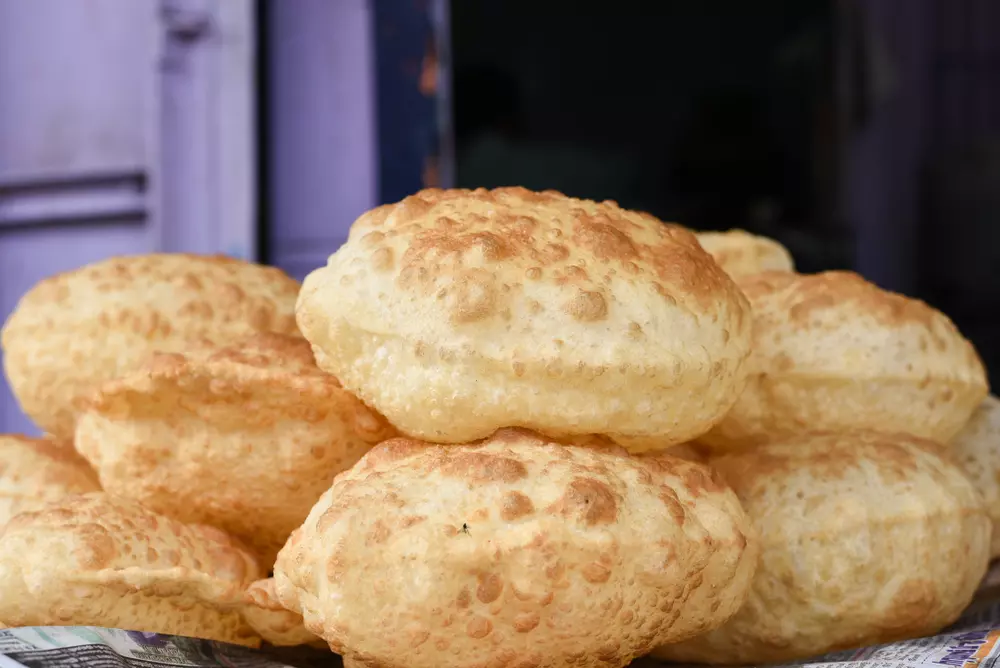Fried junk or India's very own sourdough bread: decoding the much-loved bhatura
An excerpt from Yuktahaar: The Belly and Brain Diet by Munmun Ganeriwal
- By Munmun GaneriwalLoading...
- | 23 April 2022 10:00 AM IST
 X
X
The thing with food is that it trends, just like fashion, movies and TV shows. When Google released its 'Year in Search' report for 2020, sourdough bread grabbed the third spot among the top 10 trending recipes globally. (Dalgona coffee was at the top, unsurprisingly!) It seems every 20-something Tom, Hardik and Hari's new obsession is sourdough bread. But long before it made its way to Instagram and Twitter, Ikarians—known for their high life expectancy—have been eating true sourdough bread. There's nothing new about sourdough. It has been around for millennia.
Why Is This Ancient Process Becoming a Modern Trend?
Real sourdough bread is made with a long fermentation process—at least eight hours of fermentation time—without the use of any baker's yeast or commercial yeast. The breads are leavened by long-lasting fermentation of dough using naturally-occurring lactobacilli bacteria and yeast. The LABs break down the sugar in the dough and produce lactic acid, which contributes to the distinctive sour flavour of the bread. It is this method of prolonged fermentation that brings with it many health benefits, making sourdough bread one of the most sought-after superfoods among the health-conscious.
Unfortunately, most sourdough breads sold commercially in stores are fake; they contain fast-rising yeasts, ferment for only one to two hours and are devoid of many nutritional benefits. While there are artisanal bakeries in the metro cities of India that bake a true sourdough (I will still advise that you ask your baker how long the bread is fermented for), what if I told you about another traditionally-made, slow-fermented bread? Made from sourdough fermentation using a stable culture of natural lactic acid bacteria and yeast in a mixture of flour and water, this is India's very own sourdough that you can make easily in your own kitchen—the bhaturas!
Like real sourdough bread, a traditionally-made bhatura (not the instant kind that use baking soda, etc) offers many health benefits:
1. It's gluten-free: A long fermentation process (around 7 to 8 hours) gives enough time to the LABs (Lactic Acid Bacteria) to break down the gluten proteins in the wheat dough. In a 2011 study, researchers showed that when wheat undergoes a slow lacto-fermentation, it is possible to render it technically gluten-free. So, the bhatura that we think of as deep-fried junk has less gluten than even breads labelled 'gluten-free' and is sans chemicals and additives that are usually found in commercial breads.
2. It's rich in dietary fibre: There's so much fuss about the maida in bhatura. 'OMG it doesn't have fibre! OMG it will spike up sugar levels!' What if I told you that your fears are unwarranted? Welcome to the world of resistant starch (RS). As the name suggests, RS resists digestion. Our bodies cannot break it down to use for energy, but the good microbes in our gut love to feast on them. In the body, RS acts in a very similar way to dietary fibre, and has been associated with many health benefits. What we do not know—probably because we have never given enough importance to the tiny good guys living inside of us—is that maida has higher RS than whole wheat flour! A research study to estimate the RS content of selected, routinely-consumed Indian food preparations found that the bhatura contained more RS than whole wheat chapati! A long fermentation process enhances the levels of RS in breads. Additionally, the higher the fermentation time, the more the EPS (exopolysaccharide) produced. If you remember, EPS are complex carbs that also contribute to the dietary fibre content of the food. This increase in fibre slows the digestion of the bhatura and does not cause rapid blood sugar spikes like a commercially available white bread, also made from maida, would. In fact, the old-fashioned long fermentation process to make sourdough bread gives enough time to the wild yeasts and bacteria to break down the sugars in the dough, making them low on the glycemic index scale. A bhatura with more fibre and reduced sugars is, hence, slow burning, will keep you fuller for longer and help maintain steady blood sugar levels. It is not only safe but good for people who are diabetics and/or are obese.
But bhaturas are deep fried and therefore unhealthy, right?
It's 2021! Let's do away with stereotyping fried foods as unhealthy. Bhaturas are deep-fried but not necessarily unhealthy. It is best to deep-fry them in good old ghee, not refined vegetable oils that are inflammatory. The virtues of ghee would take up a book in their own right. The anti-inflammatory fat in ghee, along with the fibre and protein in chole, can help avoid the blood sugar roller coaster and increase satiation levels. Before any American restaurateur in Manhattan puts chole bhature on his menu, describing it as crispy Indian sourdough bread, slowly leavened with a live culture, gluten-free, lactose-free, rich in fibre and possessing prebiotic benefits, served with spicy chickpeas, pickled ginger and raw onions', let's wake up to the glories of our own food!
This excerpt appeared originally in The Belly and Brain Diet (Penguin Random House) by Munmun Ganeriwal. IFN has used an edited version.

Munmun Ganeriwal
Munmun Ganeriwal is a celebrity nutritionist and fitness consultant. She has also won the award for Best Nutritionist by FEMINA 5thWWLC 2018. She is the founder of ‘Yuktahaar’ and is India's only professional to have acquired both a Master’s Degree in NutritionScience and International Certification of Health Fitness Instructor from the American College of Sports Medicine. She has authored the book, The Belly and Brain Diet.


